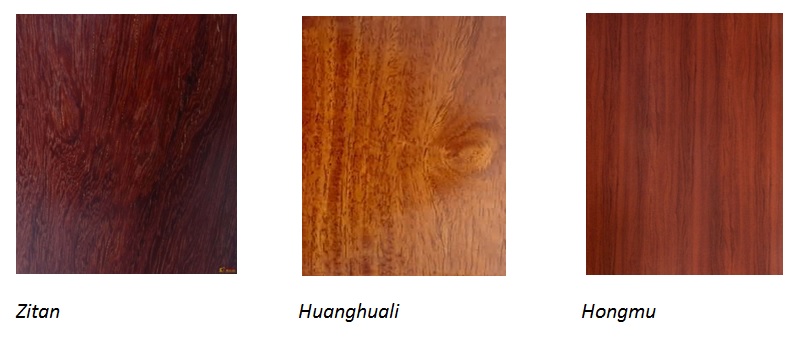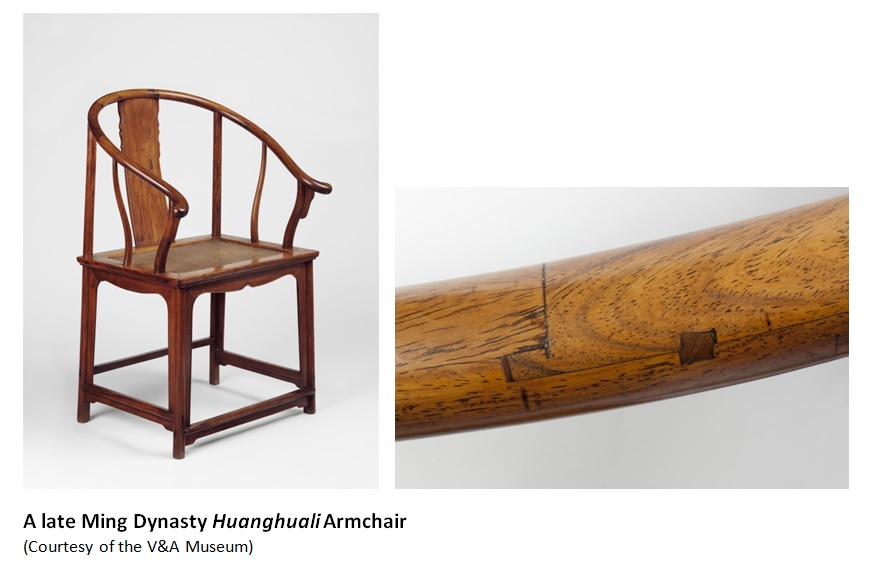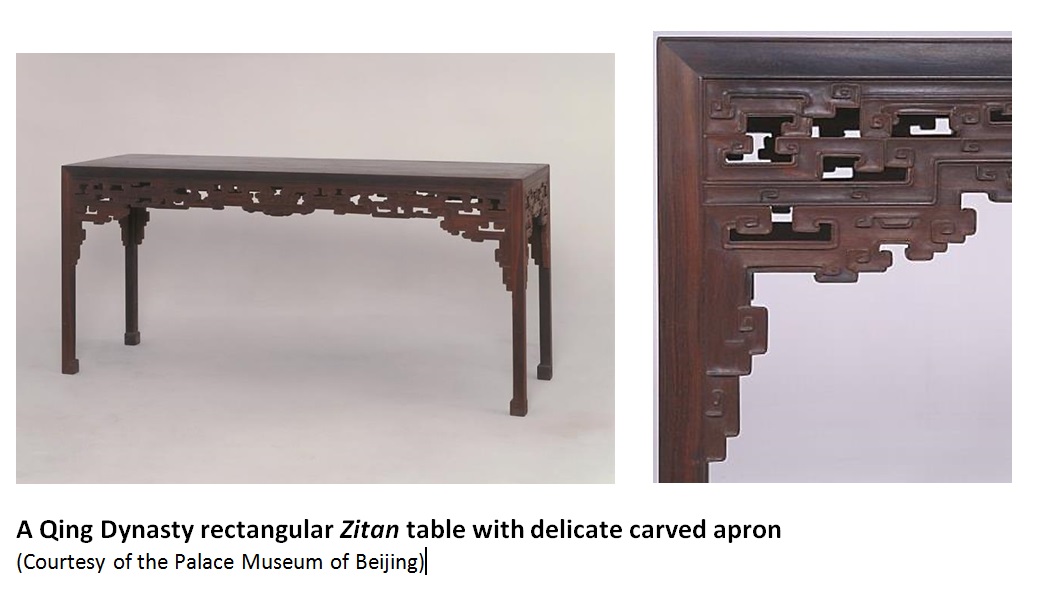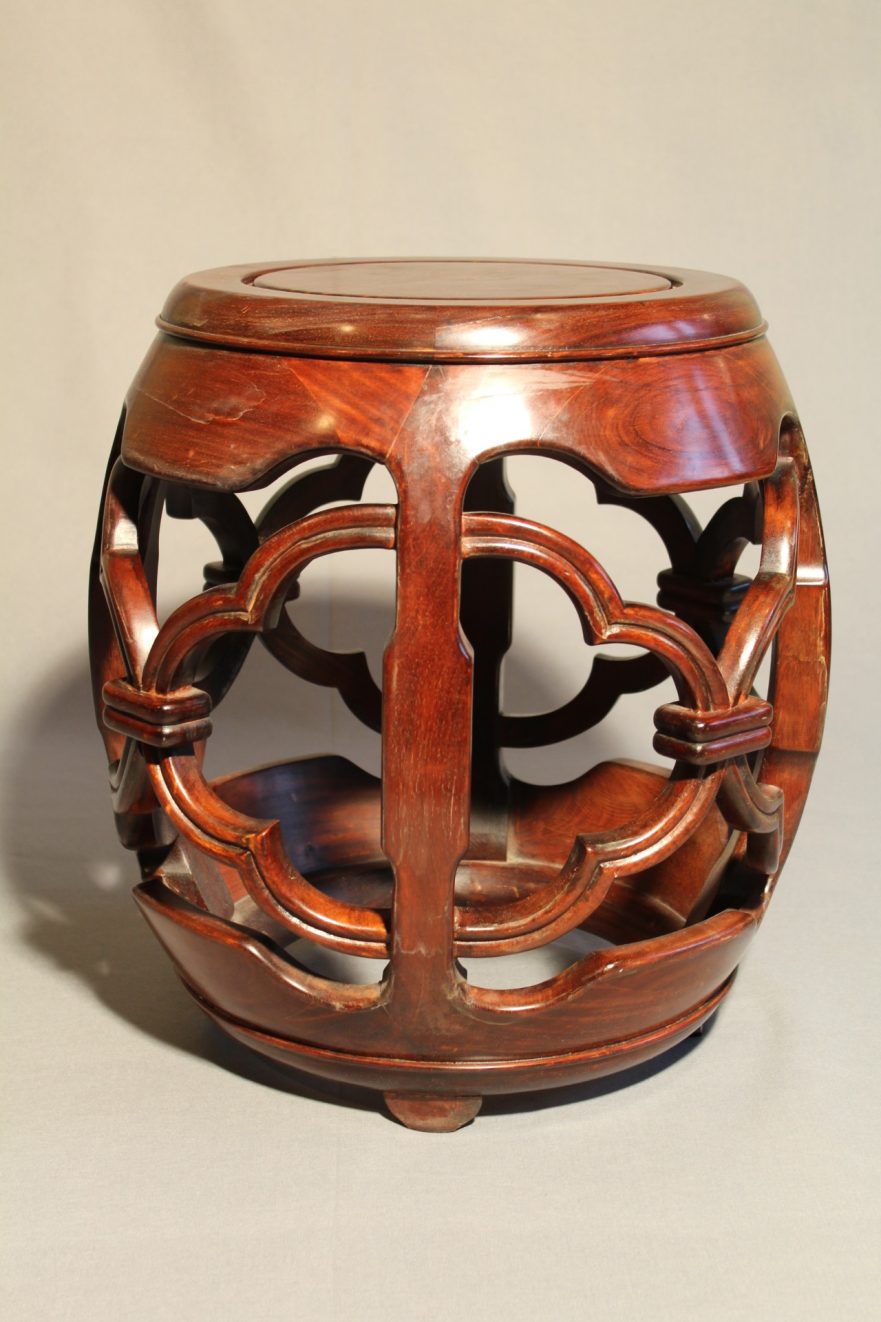In a board sense, Chinese Classical Furniture refers to all types of furniture made during the Ming and Qing Dynasty. It includes examples used daily by ordinary families, and those with flamboyant carved decorations intended for the wealthy classes, or even the Imperial family.
In the first half of the 20th Century, Western Scholars and collector began to show interest in the cultural and artistic values of traditional Chinese furniture. By the 21st Century, they have become one of the most favoured categories among collectors of Chinese Antiques. One of the many aspects that attracted connoisseur’s attentions was the material, which often featured beautiful grain and rich colour. Though made from a variety of wood, fine quality pieces of Chinese classical furniture much sought after by modern antique collectors were crafted with rare hardwoods. Zitan, an extremely dense, blackish-purple wood, is considered as the most precious of all wood and is said in ancient texts to have sourced from various places from Indochina to Chinese provinces, like Yunnan, Guangxi and Guangdong. Huanghuali, mostly harvested in Guangdong province and Hainan Island and known for its exquisite range of colour from light yellow to purplish red and excellent grain, was used to make most of the best furniture during the late Ming and early Qing Dynasty. Lastly, Hongmu is the most common hardwood in Chinese Classical Furniture, but it was not until the second half of the Qing Dynasty when it was used extensively.

From small stools and chairs, to large cabinets and bookcases, Chinese Classical Furniture appeared in many forms with different functions. The characteristics and styles of the furniture rooted in the common traditions of the Chinese people. The late Ming of the 16th and 17th centuries was a period when the society was dominated by influential scholarly class. To suit the needs of these individuals, who were actively in pursuit of quiet and plain lifestyles, a succinct style of furniture featuring minimal decoration was produced. Though simple in design, craftsmen paid extra attention in its practical function, as they carefully built in the lines and proportion in order to provide the highest level of comfort to its owner. By the Qing Dynasty, the minimalist style from previous time also persisted. However, a new style, influenced by the aesthetic taste of the Manchu court for opulence and flamboyance, was particularly in fashion. Chinese furniture in this style was much heavier and elaborate, often enhanced with intricate carvings and even inlaid decorations.

中國古代家具,從廣義來説是指各式樣的明清家具,在古時是各堦層人士家裏的必需品。早在20世紀初,西方的學者與收藏家已經開始對中國家具所蘊涵的民族文化傳統產生了興趣。而到了21世紀, 它們更是成爲了在中國古董收藏界裏面最受歡迎的其中一個種類。然而其用料是其中一個讓中國家具得到衆多收藏家喜愛的原因。雖然家具的原料有許多种,但最爲精美的中國家具均是用珍貴的硬木製造而成的。其中紫檀是在中國等級名份比較高的珍貴木材。 生於亞熱代地方,如中國雲南,海南以及南洋國家,紫檀木材堅硬緻密,色澤大多為深紫紅色,紋理極爲細密,在明清時代大多數只供給宮廷使用。黃花梨是另外一種在古代被奉為最珍罕的木材。出產于中國海南島和兩廣,黃花梨的木紋十分美觀,肌理細膩,顔色種類多,從淺黃到紫赤。明代及清代早期製作的高檔家具大多是用這種木材所制。其他比較普遍使用的硬木材統稱為紅木,簡單來説就是指帶紅色木紋的硬木,在紫檀和黃花梨短缺的晚清時期特別受到重用。

明清時期是中國古典家具的黃金時期。在這個時期製造的家具品種繁多,如桌椅,櫃,凳及其他家居擺設。跟其他中國藝術品一樣,人們的品味和社會的風向對家具的風格產生了直接的影響。在晚明時期,中國文人的清高品格得到了升華以及廣大社會的重視,而他們所追求的樸素生活方式也充分反應在當時的家具風格。雖然構造普遍簡單,大多式樣質朴,但工匠們並無掉以輕心,而更花心思來提高家具的舒适性。可到了清代,因宮廷審美情趣及思想觀念的變化,家具的風格也漸漸的失去明代簡約流暢的風格。到了乾隆後期,造型更是變化無窮,作工特別細緻,注重裝飾。往往採取一木連作,因此清代家具造型上和明代對比渾厚,莊重。

